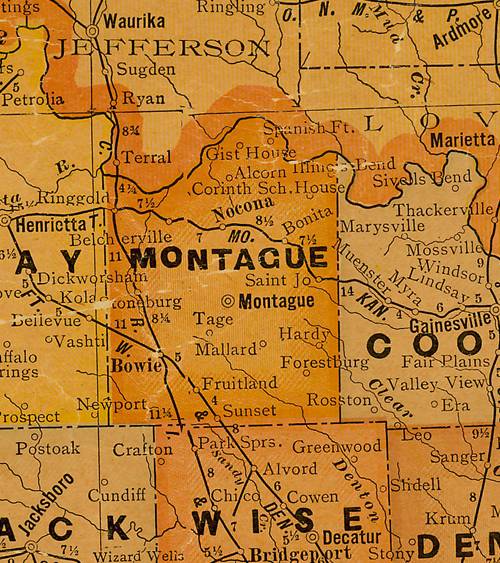Spanish Fort, Texas, Montague County ghost town. (original) (raw)
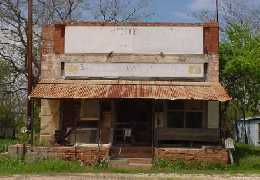
Spanish Fort, Texas
by Robin Jett
The Roads of Texas
atlas AND Ghost Towns of Texas by T. Lindsay Baker claim that Spanish Fort is a ghost town - but when I visited it, quite a few live souls waved at me from their riding lawn mowers. However, when taking into account the colorful history of this now-sleepy town on the banks of the river that runs red (ok, most of the time it's brown), the term "ghost town" aptly describes this community.
The site that Spanish Fort now occupies was once a Taovaya Indian village. Mostly, the natives peacefully farmed and traded with the French. In 1759, Spanish troops under Diego Ortiz Parilla tried to claim the territory after a Taovaya and Comanche raid on the San Saba mission. To thwart the Spanish, the Taovaya built a large fort, surrounding it by a moat. The Taovaya and Comanche tribes (some say with French help, although that was probably not likely) captured a Spanish canon, and used it successfully in a battle that made the Lords of the South run for the hills. If the natives had known high-fives back then, they probably would've exchanged several.
But the history of the Western Frontier proved that peace never remained for long. In the 1830s, American settlers, in their good ol' manifest ways, decided that the fort they found in the fertile Red River valley should be rightfully theirs. Since they thought it belonged to the Spanish (may have been the canon that led them to this conclusion), they named the "new" town they founded Spanish Fort. The Taovaya, decimated by smallpox, decided that the neighborhood was going to the birds, so they headed west and merged with the Wichita.
Soon, the Chisholm Trail cut its way to Spanish Fort, which now had a population of about 1,000. The crossing at the Red River signaled the entry into untamed Indian Territory, which provided the cowhands a reason to need lots of wine, women, and song. Spanish Fort complied by opening 4 hotels, several saloons, bordellos, and a few specialty shops, including the first store of that famous cobbler H.J. Justin. The town also boasted a doctor, who remained busy tending to the dying after gunfights. It has been told that on one Christmas morning, 4 men found their way into the red soil of the Spanish Fort cemetery after an all-night poker game at the Cowboy saloon went awry. Ghost Towns tells of the cemetery holding 43 graves: 3 suicides and 40 murders.
Once the railroad made the Chisholm Trail obsolete, Spanish Fort lost its glory. Being so remote from major roads and rail lines, the inhabitants moved south to greener pastures. By the turn of the century the rough trail town quieted into a laid-back, tiny community. With the discovery of oil in fields surrounding Spanish Fort, the town rebounded long enough to open a schoolhouse in 1924, but now it too sits forgotten along the road that once lead cattle across the banks of the Red River.
�
Spanish Fort Landmarks

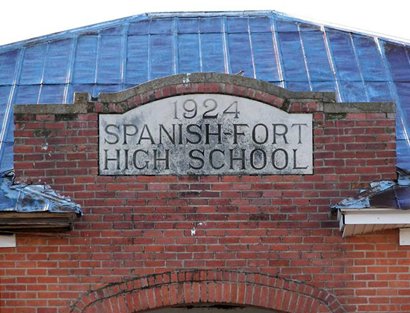
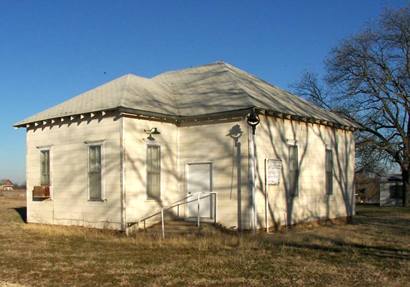
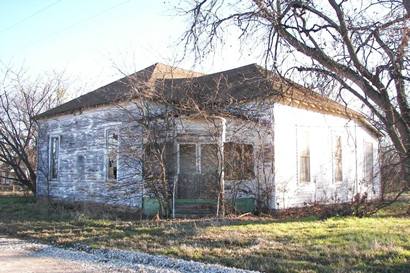

1939 Spanish Fort Cemetery Entrance
Photo courtesy Barclay Gibson, 2007
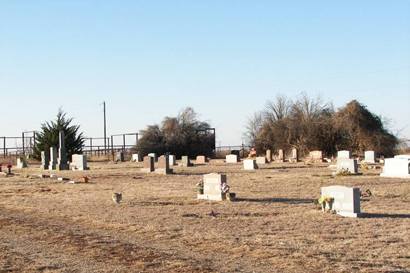

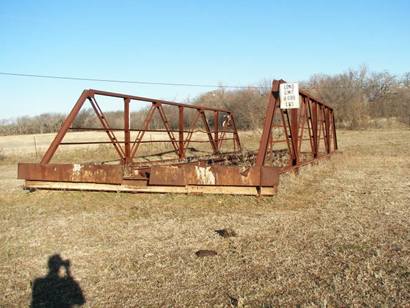
Abandoned Bridge SE of Spanish Fort
Photo courtesy Barclay Gibson, 2007
| Bibliography: Baker, T. Lindsay. Ghost Towns of Texas. Norman: University of Oklahoma Press, 1986. Farman, Irvin. Standard of the West. Fort Worth: TCU Press, 1996. Jelks, B. Edward. Taovaya Indians. Handbook of Texas On-line. Texas A&M University. The Roads of Texas. Fredericksburg, TX: Shearer Publishing, 1988, rev. 1995,1999. � Robin Jett May 2002 | | | ----------------------------------------------------------------------------------------------------------------------------------------------------------------------------------------------------------------------------------------------------------------------------------------------------------------------------------------------------------------------- | |
Texas Escapes, in its purpose to preserve historic, endangered and vanishing Texas, asks that anyone wishing to share their local history, stories, landmarks and recent or vintage photos, please contact us.
